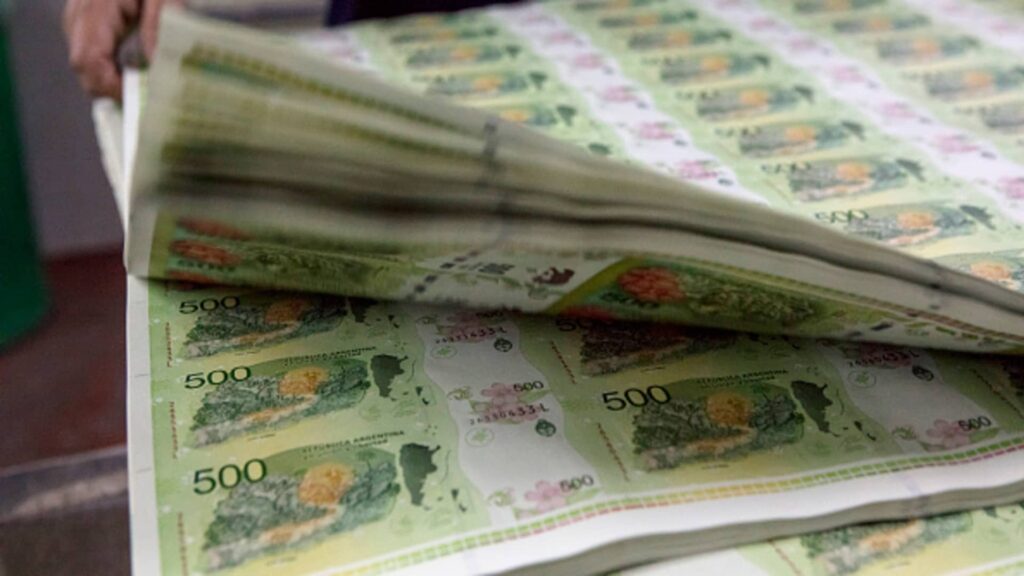The author in Argentinian Patagonia in February 2023. Here, the Spegazzini Glacier cascades into Lago Argentino, the third largest lake in South America.
A legal exchange rate influenced by the black market
A worker lays out 500 Argentine peso note sheets on Aug. 14, 2020 in Buenos Aires. To cope with one of the world’s highest inflation rates, Argentina produces money 24 hours a day.
Ricardo Ceppi | Getty Images News | Getty Images
In Argentina, waiting for a cash transfer isn’t strange at all. In fact, it’s custom — and an oft-recommended way to stretch your dollar there.
There are two main drivers: While the broader world has become increasingly cashless, cash is king in Argentina. Hyperinflation has also distorted the nation’s currency market and led to the creation of multiple exchange rates.
When I visited in February, the “official” exchange rate — the one quoted by online currency calculators — gave U.S. tourists about 190 Argentine pesos per dollar. But the unofficial, “blue dollar” rate was nearly double that.
El Caminito, an “open-air museum” of colorful houses in the La Boca neighborhood of Buenos Aires.
Greg Iacurci
Put another way: Your money goes almost twice as far with the “blue dollar” exchange rate. This rate is set by underground exchange houses operating on the black market. Western Union is a legal workaround to get a similar rate.
You won’t get the better conversion when transacting at an airport counter and, depending on the situation, may not when withdrawing from an ATM or using a credit card.
I learned this the hard way, only discovering how to get the better rate after exchanging $150 at the airport — and getting about half the pesos I otherwise could have.
Hence my trip to Western Union a day later, where, after watching a short video on how it works, I exchanged $350 for about 128,000 Argentine pesos on Feb. 13 — a rate of 366 pesos per dollar.
The author’s digital Western Union receipt after picking up cash in Buenos Aires, Argentina….
Read the full article here





